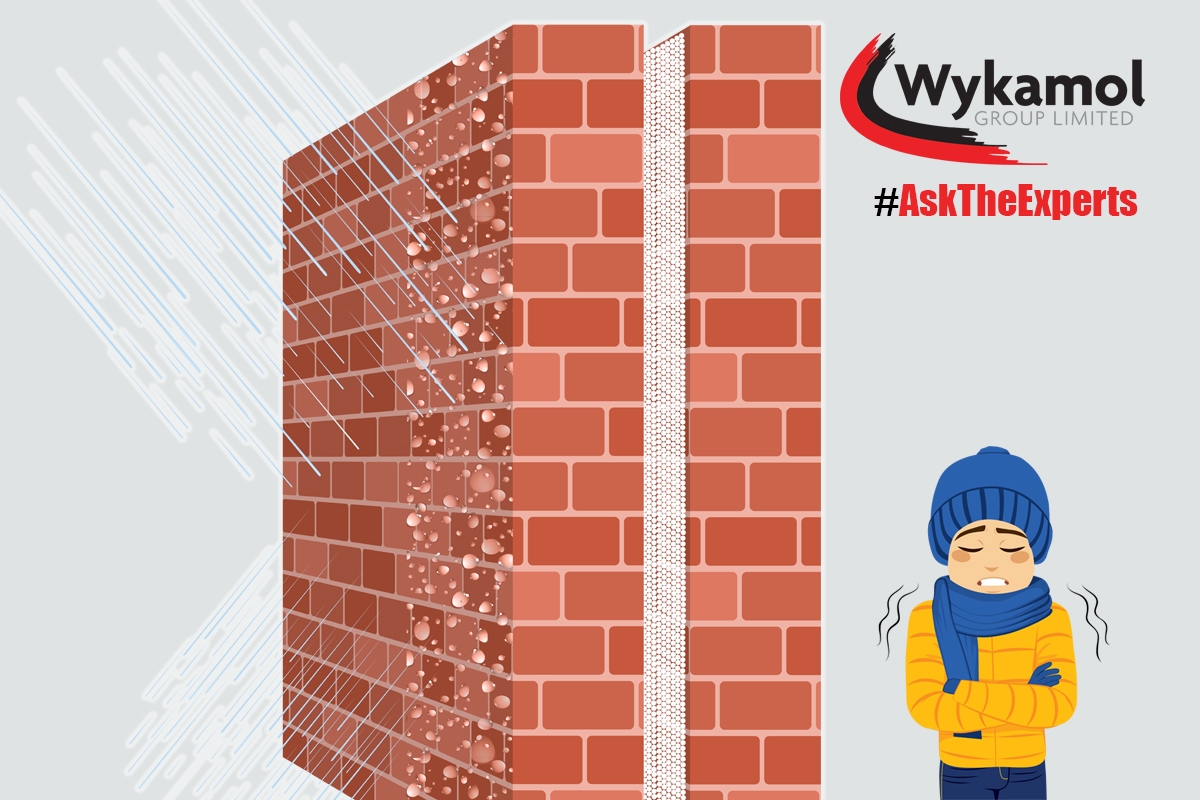Posted on 27/7/18 in Products, Articles

Cavity Wall insulation is a material placed between the two leaves of a cavity wall to inhibit the transfer of heat from a property. For retrofit Cavity Wall Insulation (CWI), a fibrous material, such as glass wool, is blown into the cavity through holes drilled into the masonry, until the space is filled.
In recent times, government schemes such as the Green Deal and Energy Company Obligation (ECO) have given grants to the retrofit cavity wall insulation industry, in an attempt to save homeowners, with poor or no insulation, money on their energy bills.
The quality of the insulation installed, how it was installed and the suitability of the property itself, are all factors which must be considered when assessing why the retrofit CWI has failed.
Walls that are exposed to poor weather conditions, such as wind-driven rain, are unsuitable for CWI, as a small imperfection in the brick work, or a lack of masonry protection cream on the exterior walls means the insulation is vulnerable to becoming damp, or even sopping wet.
The wet CWI then bridges across the cavity, causing the interior walls to become wet, which will result in damp, condensation and even mould growth within the property.
A quick google search will show numerous properties across the UK that have suffered from the negative effects of poorly or unnecessarily installed CWI.
Once CWI is wet, it is almost impossible to dry out. The insulating properties of the materials used mean they are extremely porous, and access to the cavity itself is difficult without embarking on disruptive building works.
Wet CWI can be extracted by removing some bricks to access the material, breaking it down and using a high-pressure vacuum to suck the insulation out of the cavity. However, this process does not rectify the internal damage caused by the bridging of the cavity. Damp walls will need to undergo remediation or the internal environment of the property will not improve.
Internal remediation after CWI failure is, unfortunately, not something which can be avoided. However, the good news is that if done correctly, the internal remediation works could save you money on CWI extraction, as when combined with works on the external masonry, the actual extraction itself becomes unnecessary.
To prevent further rain penetration through the exterior wall, pointing should be made good and an application of DrySeal Masonry Protection Cream is essential. With up to 29% energy savings, not only does DrySeal prevent any further dampness coming through the outer leaf of the cavity, but it could save the homeowner almost the same amount of money on their energy bills as promised by CWI companies (up to 33%). This product allows the walls to continue to breath, encouraging the CWI to dry out while preventing any further water ingress.
Interior plaster finishes must be removed, as they will have been contaminated and dampened by the bridging of the cavity. The walls will need to be dried out and an application of Wykamol’s Renovation Plaster applied, which effectively controls the migration of damp and harmful salts. It also has insulating properties which will help improve the energy efficiency lost by the failed CWI.
For particularly saturated masonry however, we may recommend an application of DampStop Mesh Membrane, which can be applied directly on to wet walls, saving time and money.
After finishes have been applied, the system is completed with an application of ThermalDry Anti-Condensation coating, a unique product in the market which utilises micro-technology to prevent condensation and black spot mould from forming on any remaining cold spots on the walls. Where CWI has been poorly installed, gaps can be left uninsulated, causing spots on the interior walls to become significantly colder than the surrounding area, and condensation will occur as a result of this. Walls treated with ThermalDry avoid condensation for up to 60% longer.
If you need advice from one of our Technical Experts or you would like a site visit, either locate your local expert here, or call Head Office on 0845 400 6666.